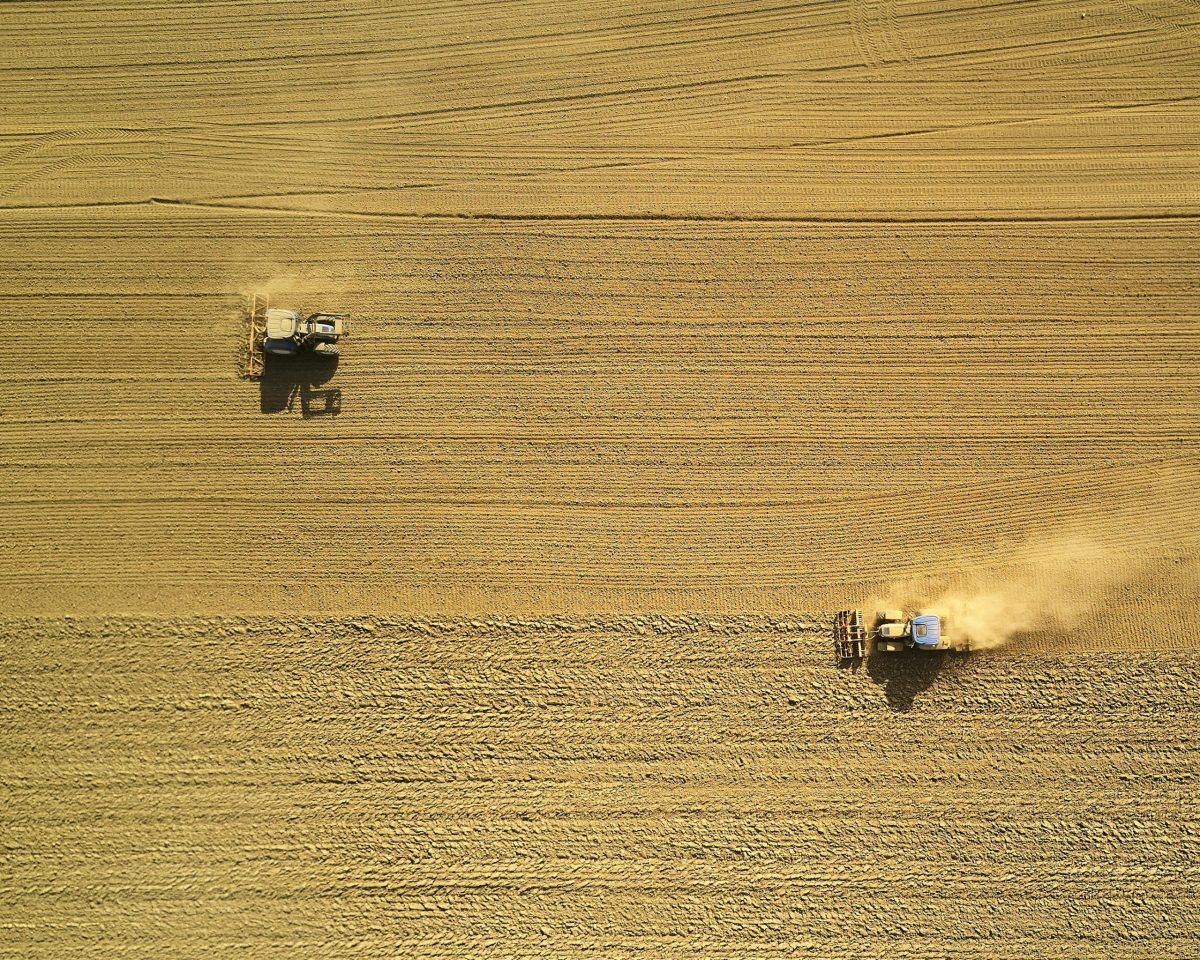Growing up in Austria, surrounded by majestic mountains and beautiful landscapes, I found joy in nature. Whether I was climbing trees, exploring wheat fields, or imagining adventures in the forest, the outdoors always brought me happiness. One of my cherished memories is visiting my uncle’s farm nestled in the mountains. There, amidst the rugged terrain, he tirelessly tended to his cows, pigs, and chickens, working from sunrise to sunset.
Now, fifty years later, I find myself reminiscing about those childhood days as I observe the remarkable changes in agriculture. Technological advancements have revolutionised farming, making it more efficient, productive, and sustainable. Farmers no longer endure laborious toil in the fields; today, they utilise cutting-edge innovations.
However, alongside these advancements comes the challenge of feeding a projected global population of nearly 10 billion by 2050 while preserving Earth’s resources, conserving water, and protecting biodiversity. Climate change adds another layer of complexity, with extreme weather events becoming more frequent and severe.
Yet, amidst these challenges, there is hope. Innovative technologies, especially artificial intelligence, have the potential to transform agriculture and mitigate the impacts of climate change.
In this blog post, we will explore how technology has changed agriculture. We discuss how these advancements address global food demand and tackle climate change challenges like extreme wildfire events. For instance, exci’s AI-powered wildfire detection system offers a groundbreaking solution to combat wildfires. Join me as we uncover the transformative power of technology in shaping the future of agriculture and preserving our planet for future generations.
Technological Evolution in Agriculture
Over time, agriculture has witnessed a remarkable evolution driven by technological advancements. From the mechanisation of farming to the integration of artificial intelligence, each phase has contributed to enhancing farming practices and increasing food production.
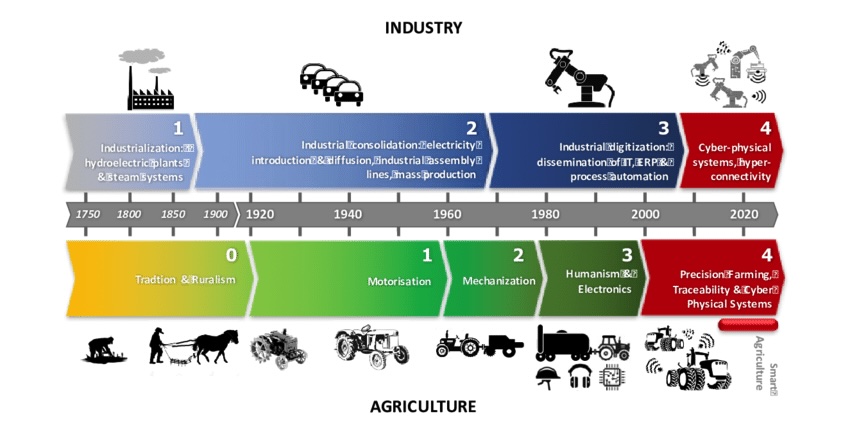
Comparison between the evolutionary technological phases of agriculture and industry
Mechanisation
One of the most significant changes in agriculture has been the shift from manual labour to mechanisation. Tractors, harvesters, planters, and other machinery began to replace much of the backbreaking work traditionally done by human hands and draft animals in the late 19th century. This has increased productivity and enabled farmers to work in larger land areas more efficiently.
![]() Early mechanised farming by a crew of three men Source: Rawpixel
Early mechanised farming by a crew of three men Source: Rawpixel
The Green Revolution
The Green Revolution, a period of rapid agricultural innovation from the 1940s to the 1960s, saw the development and adoption of new high-yielding crop varieties, like wheat and rice. Scientists like Norman Borlaug played a key role by creating crops that were more resistant to pests, diseases, and droughts.
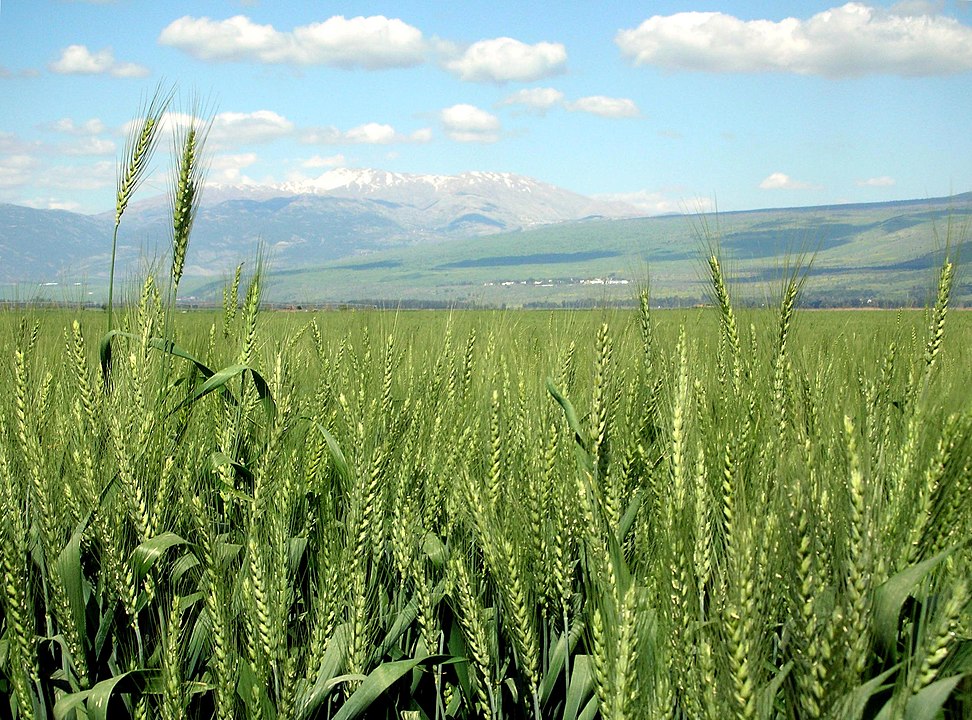 Wheat in the Hula Valley 2007 Modified by Carol Spears Source- https-commonswikimediaorgwikiFile-Wheat-haHula-ISRAEL2JPG
Wheat in the Hula Valley 2007 Modified by Carol Spears Source- https-commonswikimediaorgwikiFile-Wheat-haHula-ISRAEL2JPG
Genetic Engineering and Biotechnology
In the 1970s, scientists started developing genetically modified organisms (GMOs). These crops have enhanced resistance to pests, diseases, and harsh environments. They’ve helped increase yields and reduce the need for chemical pesticides and fertilizers.
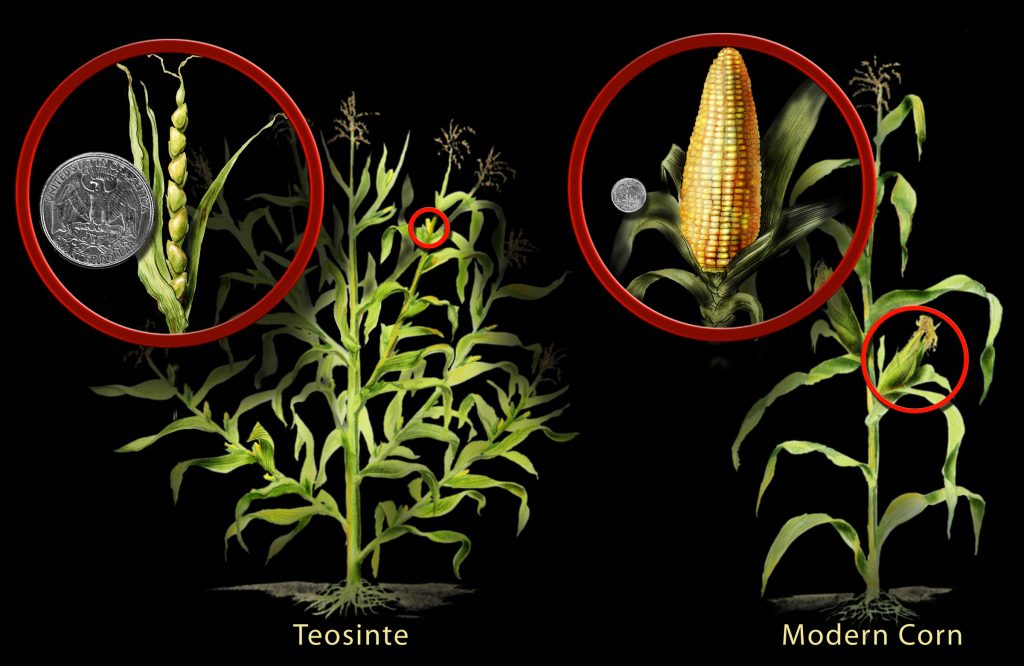 A teosinte wild grass was genetically modified through selective breeding to produce maize corn. This work, modified by Nicolle Rager Fuller, is in the National Science Foundation is in the Public Domain CC0
A teosinte wild grass was genetically modified through selective breeding to produce maize corn. This work, modified by Nicolle Rager Fuller, is in the National Science Foundation is in the Public Domain CC0
Satellite Technology
Satellite technology has been integrated into agriculture since the 1980s, providing solutions to climate change impacts while enhancing efficiency and sustainability. Remote sensing satellites have revolutionised agriculture in Australia, offering farmers a comprehensive view of their land and enabling informed decision-making. Satellite imagery provides real-time insights into crop growth, health, and yield potential, enabling timely interventions and maximising profitability.
In addition, satellite technology supports environmental monitoring and conservation efforts, tracking land use and biodiversity changes. Satellite-based Augmentation Systems enhance positioning and navigation, benefiting both farms and forests. Despite challenges like data accessibility and affordability, strategic investments and collaborative efforts can overcome barriers to adoption, unlocking the full potential of space technology for agriculture in Australia.
 ESA Infographics Agritech graphic
ESA Infographics Agritech graphic
Precision Agriculture
Precision agriculture, popularised in the 1990s, employs GPS, drones, and sensors to enhance crop management. Farmers minimise waste and environmental impact by optimising crop health, soil quality, and water usage, leading to improved yields.
Irrigation Systems
In the 20th century, agriculture underwent significant advancements in irrigation technology, transforming how water is managed and distributed on farms. Outdated methods like flood and furrow irrigation have gradually given way to more precise and efficient systems. Drip irrigation, a breakthrough introduced in the mid-20th century, directs water straight to plant roots via tubes and emitters, minimizing waste while maximizing crop yield.
Likewise, sprinkler systems, which carefully spray water across fields, have gained popularity for their versatility and efficiency in covering large areas. Moreover, integrating sensor tech, weather prediction, and automation has created smart irrigation systems. These systems adapt water applications in real-time based on environmental conditions, enhancing efficiency and conservation. These advancements boost crop productivity and promote sustainability in modern agriculture.
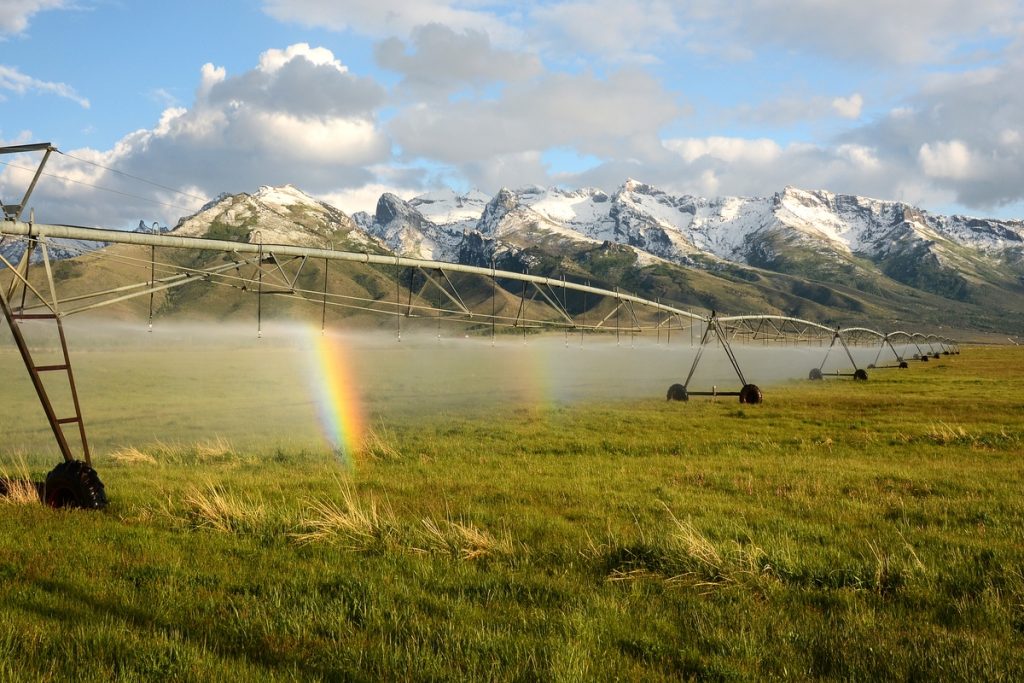 Irrigation technology. Source: Rawpixel
Irrigation technology. Source: Rawpixel
Mechanised Harvesting and Processing
Historically, harvesting and processing crops relied heavily on manual labour, with farmers employing scythes, sickles, and other handheld tools to gather and prepare crops for consumption. However, with the onset of the Industrial Revolution in the late 18th century, agricultural machinery began to emerge, marking a significant shift in farming practices. The invention of the reaper by Cyrus McCormick in the early 19th century revolutionised grain harvesting, enabling farmers to increase their productivity and efficiency significantly.
As the 20th century progressed, mechanisation continued to evolve, with the introduction of combine harvesters, threshers, and other sophisticated equipment that streamlined the harvesting and processing of various crops on a large scale. Today, mechanised harvesting and processing technologies encompass a wide range of machinery, from self-propelled harvesters to advanced processing plants, contributing to the optimisation of agricultural operations and the global food supply chain.
Information Technology
In the late 20th century, agriculture saw a surge in the adoption of information technology (IT), including smartphones, computers, and the Internet. These technological tools provide farmers access to vast amounts of data, such as real-time weather forecasts and market trends. By leveraging this data, farmers can make more informed decisions to enhance the productivity and profitability of their farms.
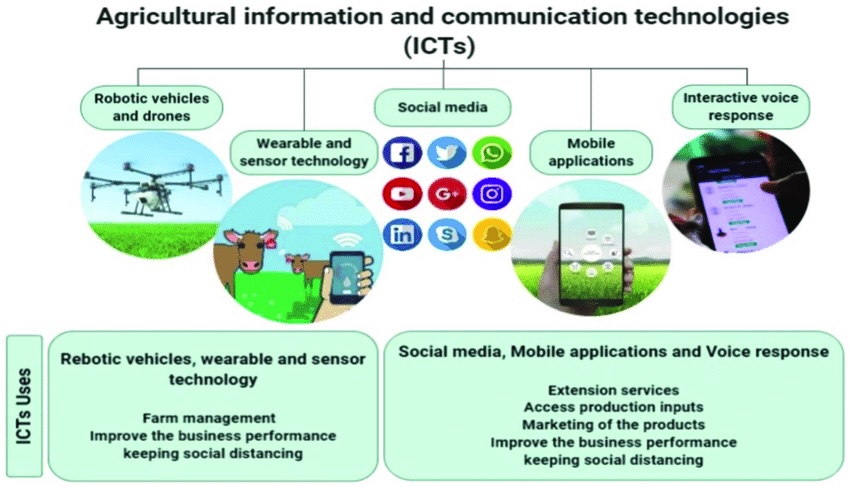 Information and communication technologies used in the agricultural sector and their applications. Source: https://www.mdpi.com/2071-1050/13/12/6521
Information and communication technologies used in the agricultural sector and their applications. Source: https://www.mdpi.com/2071-1050/13/12/6521
Vertical Farming and Hydroponics
Innovation in vertical farming and hydroponic systems began in the early 21st century. Vertical farmingan innovative technique for cultivating crops indoors in a vertical arrangement, where environmental conditions are closely monitored and optimized for plant growth, relies on controlled environment agriculture (CEA). This method integrates cutting-edge technologies to provide the ideal conditions for plant growth. Moreover, technologies such as AI, ML, and IoT are increasingly employed to enhance productivity and efficiency in vertical farming.
While vertical farming may seem modern, with high-tech companies leading today, its roots can be traced back millennia. The Babylonian Hanging Gardens, dating around 2,500 years ago, are one of the earliest examples of vertical farming. Furthermore, hydroponic farming, which seems modern, has historical precedent. The Aztecs practiced a form of hydroponics called chinampas around a thousand years ago, growing plants on rafts above rivers and lakes.
Additionally, in the 1600s, French and Dutch farmers developed techniques to grow fruits against stone walls, creating microclimates for warmer-climate crops. These historical examples highlight human ingenuity in adapting farming techniques to challenging environments.
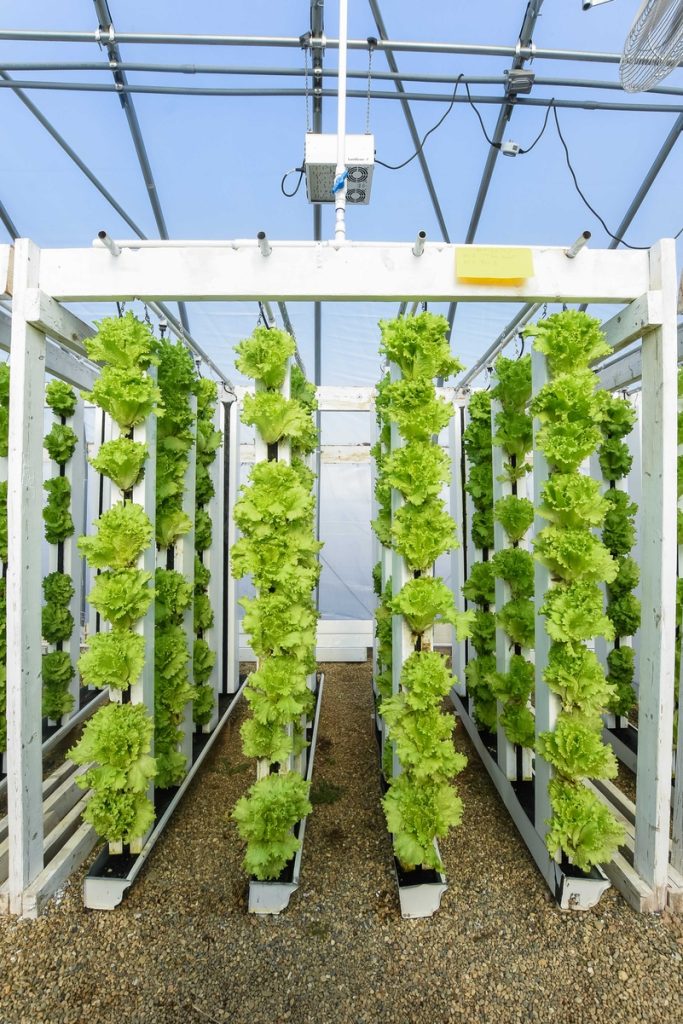 Vertical farming in Mishawaka. Source: Rawpixel
Vertical farming in Mishawaka. Source: Rawpixel
Robotics and Automation
Transitioning into the 21st century, robotics and automation technologies have gained significant traction in agriculture, leading to the emergence of automated farming or “smart farming”. This innovative approach utilises various technological devices to improve and automate agriculture operations, thereby making farms more efficient and sustainable.
Key technologies driving automated farming include robotics for tasks like harvesting, autonomous tractors for precision farming, seeding, and weeding robots, and agricultural drones for monitoring and treatment applications. By incorporating these advanced technologies, farms can streamline operations, reduce labour costs, and enhance productivity.
Moreover, automated farming offers several advantages. Firstly, it enables the production of faster, fresher, and more sustainable produce for consumers. Secondly, it increases labour efficiency, freeing up time for farmers to focus on other essential tasks. Lastly, it contributes to reducing the environmental footprint of agriculture. Through the implementation of precision farming techniques, farmers can selectively apply inputs like pesticides and fertilisers, minimizing their environmental impact while maximizing profitability.
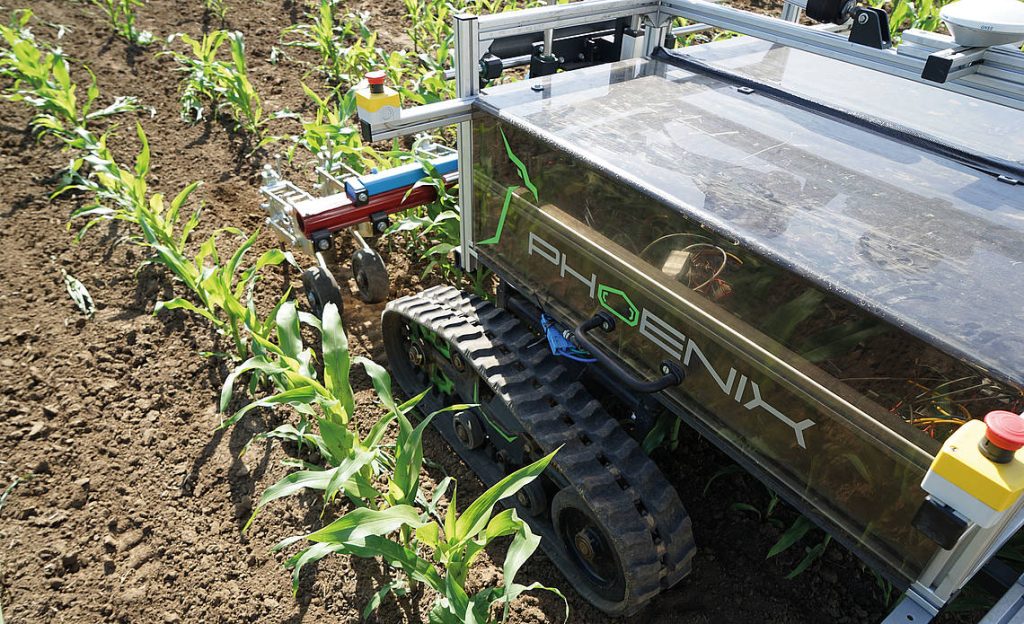 AgriRobot Image by By DLG e.V. – Own work Prof. Dr. sc. agr. Hans W. Griepentrog, CC BY-SA 4.0, https-//commons.wikimedia.org/w/index.php?curid=84465245
AgriRobot Image by By DLG e.V. – Own work Prof. Dr. sc. agr. Hans W. Griepentrog, CC BY-SA 4.0, https-//commons.wikimedia.org/w/index.php?curid=84465245
Revolutionising Agritech with Artificial Intelligence
As technology continues transforming various industries, agriculture stands at the forefront of innovation by integrating Artificial Intelligence (AI) and Machine Learning (ML). Understanding the nuances between AI, ML, and Deep Learning (DL) becomes paramount in this rapidly evolving landscape. Let’s explore these distinctions and their profound implications for revolutionising Agritech.
What is the difference between Artificial Intelligence, Machine Learning, and Deep Learning?
AI, ML, and DL are often used interchangeably but represent distinct concepts in technology and data science. AI is the broad field of making intelligent machines that mirror human cognitive abilities like problem-solving, language comprehension, learning from experience, and decision-making. In its simplest form, it means a machine programmed to solve problems.
Machine Learning vs Deep Learning
ML is a subset of AI that focuses on developing algorithms that detect patterns and make predictions or decisions by processing data without being explicitly programmed.
In contrast, deep learning, a subset of machine learning, employs deep neural networks inspired by the neurons of a human brain to discern intricate patterns from extensive datasets. DL algorithms automatically learn features from raw data without manual feature extraction, a key difference from traditional machine learning methods. For example, once the algorithms become proficient at identifying a fire, they can accurately detect fires in new images.
Embracing AI in the Face of Scepticism
Initially met with scepticism and fear of the unknown, every innovation undergoes scrutiny. While recognising the risks posed by AI, such as biased algorithms and privacy concerns, adopting AI within sturdy frameworks can achieve greater efficiency, sustainability, and resilience, particularly in confronting urgent challenges like climate change, resource scarcity, and population growth.
Enhancing Agricultural AI Results with High-Quality Data
However, AI’s effectiveness hinges on the quality of the data it receives to generate actionable insights. Moreover, decisions regarding data collection and AI implementation heavily depend on the wealth of knowledge accumulated within the farming community over generations. Hence, farmers, cooperatives, and agricultural development firms are intensifying their focus on data-driven strategies while broadening the range and magnitude of their utilisation of AI and machine learning to enhance agricultural yields and quality.
AI-powered predictive analytics can analyse huge amounts of data from various sources to provide detailed insights into every aspect of farming, from field management to supply chain monitoring. It can analyse market trends, forecast prices, optimise planting and harvesting times, and assess soil health for improved fertiliser and pesticide application. Winemakers, for example, employ AI to optimise water usage and harvest timing, reducing excess water and pesticide use based on data analysis. These advancements not only enhance farming efficiency but also contribute to sustainability goals.
AI’s Role in Mitigating Effects of Climate Change
With the increasing adoption of Artificial Intelligence (AI) and Machine Learning (ML) in agriculture, technological innovations are revolutionising the Agritech landscape. As global spending on smart agriculture technologies, including AI and ML, is projected to triple by 2025, reaching $15.3 billion, the potential for leveraging these advancements in addressing pressing challenges becomes ever more apparent. However, beyond enhancing farming efficiency and sustainability, AI also holds promise in mitigating the growing threat of extreme weather events such as wildfires exacerbated by climate change.
exci’s AI: Safeguarding Agriculture from Climate-Driven Wildfires
Farmers grapple with dwindling natural resources, farmland, and climate change’s escalating impacts. The looming threat of intensified wildfires exacerbates stress on food supply chains. The extent of this climate change effect on agriculture hinges on farmers’ adaptability. In this context, the application of AI emerges as a promising solution.
Advanced AI, utilising deep learning algorithms, can be specifically trained to differentiate environmental factors like smoke indicating fire, fog, clouds, dust, etc. exci’s AI-powered wildfire detection system stands out, having been trained on the world’s largest dataset exclusively owned by exci, enabling it to detect wildfires within minutes of ignition. This system ensures that farmers, station owners, or emergency responders receive immediate alerts once a fire is detected.
Since its inception, exci’s AI-driven system has successfully detected 131,000 wildfires as of October 2023, and the count continues to rise. Notably, exci stands out as the sole AI-wildfire detection system that has demonstrated its efficacy in extensive deployments. With over 1,000 cameras deployed across North America, encompassing over 130 million acres, and additional coverage of 25 million acres across forestry and plantations in Australia, exci’s system has proven its effectiveness on a large scale.
The Future of AI in Agriculture
In conclusion, the future of agriculture holds immense promise, driven by the transformative potential of artificial intelligence and other emerging technologies. As we stand at the cusp of a new era in farming, characterised by unprecedented levels of automation, data-driven decision-making, and sustainable practices, it’s evident that the trajectory of agriculture is poised for profound change.
The emergence of AI-driven practices, including precision farming, controlled environment agriculture, and autonomous farming technologies, heralds a paradigm shift in how we produce food, manage resources, and mitigate environmental risks. These advancements not only enhance productivity and efficiency but also offer innovative solutions to address pressing challenges such as climate change, resource scarcity, and food security.
Amidst this transformative landscape, exci’s AI-powered wildfire detection system stands out as a beacon of hope in confronting one of agriculture’s most pressing threats. By harnessing the power of AI to swiftly detect and respond to wildfires, exci’s solution exemplifies the tangible benefits of technology in safeguarding livelihoods, protecting ecosystems, and ensuring the resilience of agricultural systems.
As we navigate the complexities of the future, it’s imperative that we embrace innovation responsibly and collaboratively. By leveraging cutting-edge technologies like exci’s AI-wildfire detection system and fostering partnerships between technology firms, farmers, and policymakers, we can chart a course towards a more sustainable, resilient, and equitable agricultural future.
In essence, exci’s AI-wildfire detection technology serves as a compelling example of how innovation can empower us to address the challenges of tomorrow while creating opportunities for growth, sustainability, and prosperity in agriculture and beyond. Together, let us seize the potential of technology to build a brighter, more resilient future for agriculture and our planet.
by Gabrielle Tylor
exci – The Smoke Alarm for the Bush
23 April 2024
Don’t let Wildfire become Catastrophic!
Get in touch with our friendly team, who are happy to give you a full demonstration of how exci’s system detects wildfires within minutes and can help you protect your assets and community:
Email: info@exci.ai
International: +61 458 594 554
Australia: 1300 903 940
Visit us on our website to find out more: https://www.exci.ai/
